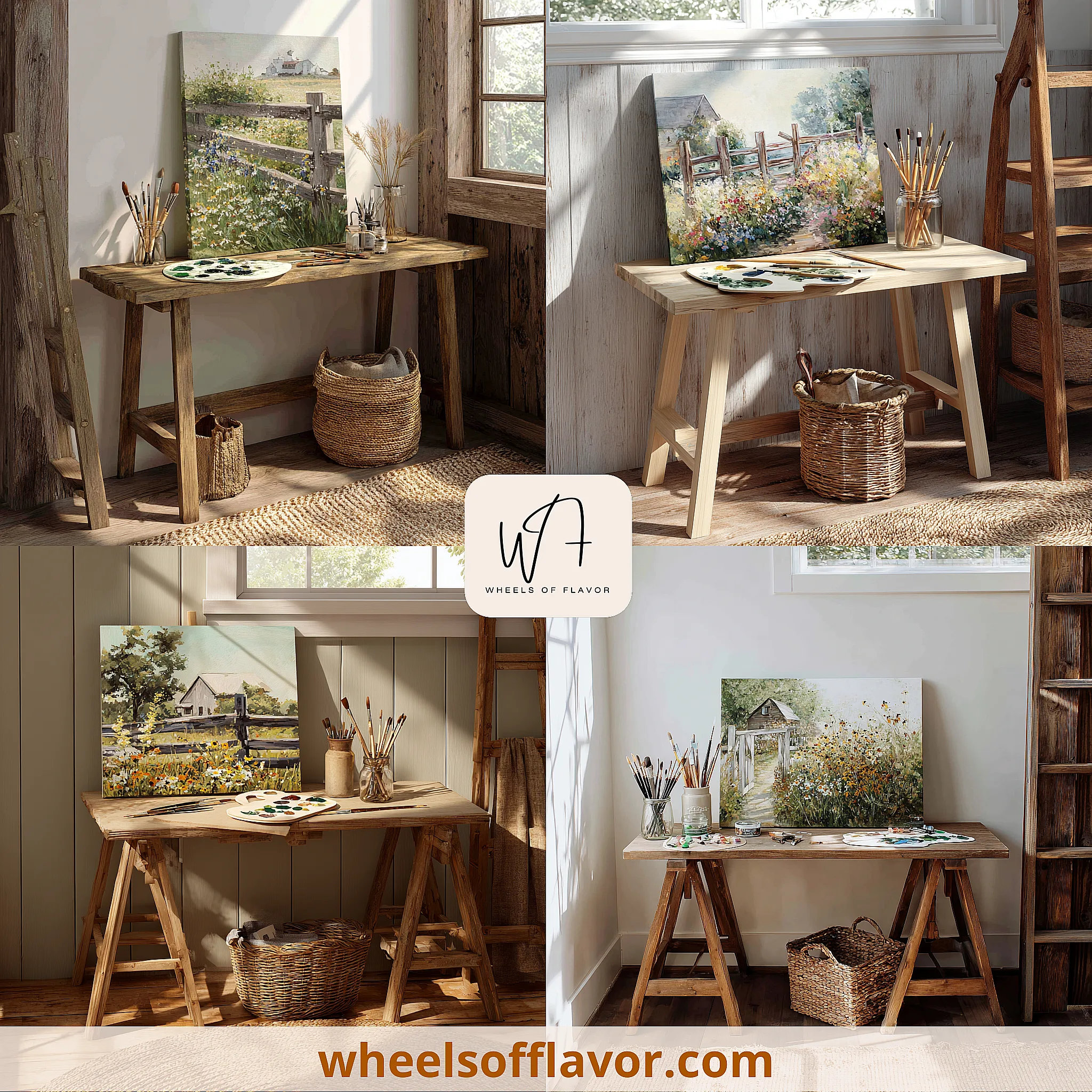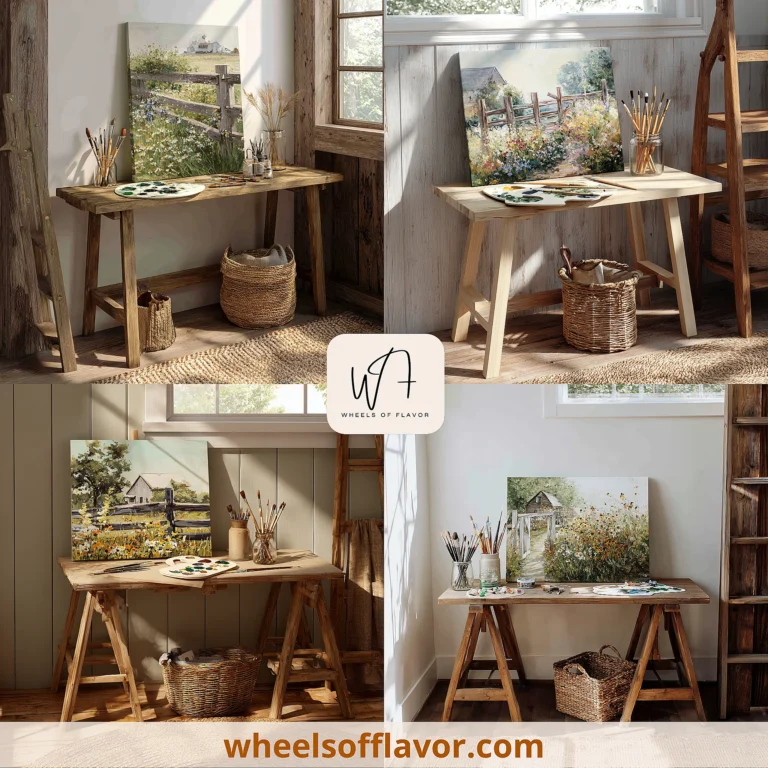
Welcome to the whimsical world of cottagecore painting ideas, where art meets nature to transform your living spaces into cozy, nostalgic retreats. Cottagecore, a design trend inspired by rural life and pastoral simplicity, emphasizes warmth, authenticity, and a connection to the natural world. Painting is a powerful way to infuse this aesthetic into your home, offering a creative outlet that’s both budget-friendly and deeply personal. In today’s fast-paced world, embracing cottagecore through painting can provide a sense of calm and fulfillment, turning ordinary rooms into sanctuaries filled with charm and character. This article explores why these ideas matter: they encourage mindfulness, reduce stress, and allow you to express your unique style without breaking the bank. Whether you’re a seasoned artist or a beginner, cottagecore painting projects are accessible to all, fostering a hands-on approach to decor that celebrates imperfections and handmade beauty. By delving into this topic, you’ll discover how simple brushstrokes can evoke the serenity of countryside living, making your home a haven of comfort and inspiration. Let’s embark on this creative journey together and unlock the magic of cottagecore painting ideas to enhance your daily life.
Essential Cottagecore Painting Ideas for Beginners
Starting with cottagecore painting ideas doesn't require expert skills; it's all about embracing simplicity and nature-inspired themes. Begin by choosing soft, earthy color palettes—think muted greens, warm browns, creamy whites, and gentle blues—that mimic the outdoors. These colors evoke a sense of tranquility and are perfect for creating a cozy atmosphere. For your first project, try painting floral motifs or botanical patterns on small canvases or wooden surfaces. Use easy techniques like stenciling or freehand sketching to depict wildflowers, herbs, or leaves, which are hallmarks of the cottagecore aesthetic. Incorporate textures by adding subtle brushstrokes or using techniques like dry brushing to achieve a rustic, aged look. Remember, cottagecore celebrates imperfection, so don't worry about making it flawless; let the charm of hand-painted details shine through. To get inspired, look to nature walks or online resources for reference. As you practice, you'll build confidence and develop your own style. These beginner-friendly ideas not only beautify your space but also provide a therapeutic escape, connecting you to the slower pace of rural life. For more tips on DIY painting, check out this guide from a high-authority blog like The Spruce, which offers excellent advice on home decor projects.
Advanced Cottagecore Painting Ideas for Experienced Artists
If you have some painting experience, dive deeper into cottagecore painting ideas with more intricate projects that showcase your skills. Explore themes like pastoral landscapes, detailed animal portraits, or whimsical scenes of cottage life. Use mediums such as acrylics or watercolors to create layers and depth, focusing on light and shadow to bring your artwork to life. For instance, paint a serene meadow with grazing sheep or a cozy interior with vintage elements, incorporating patterns like gingham or toile for an authentic touch. Advanced techniques might include glazing to achieve a soft, dreamy effect or impasto for textured highlights that mimic natural surfaces. Consider painting on unconventional materials like reclaimed wood or ceramic pieces to add a functional art element to your home. This approach not only enhances your decor but also promotes sustainability, a key aspect of cottagecore. As you work on these projects, draw inspiration from classical art or historical references to add depth to your creations. Remember, the goal is to evoke emotion and nostalgia, so infuse your paintings with personal stories or memories. For further inspiration, visit https://wheelsofflavor.com/ for ideas on integrating art into daily living. These advanced ideas challenge your creativity and help you craft unique pieces that become cherished focal points in your home.
Incorporating Cottagecore Painting Ideas into Room Decor
Once you've created your cottagecore paintings, it's time to integrate them into your home decor for a cohesive and inviting space. Start by selecting rooms that benefit from a cozy, natural vibe, such as the living room, bedroom, or kitchen. Hang your paintings on walls using simple frames made of wood or wrought iron to maintain the rustic aesthetic. Arrange them in clusters or as a single statement piece to draw attention and create visual interest. Pair your artwork with other cottagecore elements like vintage furniture, soft textiles, and natural materials such as linen or wool to enhance the overall theme. For example, a painting of wildflowers can complement a bouquet of fresh blooms on a nearby table, tying the room together. In functional spaces, consider painting directly on furniture or accessories, like a hand-painted tray or a decorative plate, to add a personalized touch. Lighting is key—use soft, warm lights to highlight your paintings and create a welcoming ambiance. This integration not only beautifies your home but also makes it a reflection of your personality and values. By thoughtfully placing your cottagecore art, you transform ordinary rooms into enchanting retreats that encourage relaxation and connection. For more decor tips, explore resources that emphasize holistic living and DIY projects.
Conclusion
In summary, cottagecore painting ideas offer a delightful way to bring the charm and simplicity of rural life into your home, whether you're a novice or an experienced artist. From beginner-friendly floral designs to advanced landscapes, these projects foster creativity, reduce stress, and allow for personal expression. By incorporating these paintings into your decor, you create spaces that feel warm, nostalgic, and uniquely yours. As we look to the future, the cottagecore trend is likely to evolve, blending with sustainable practices and digital inspirations, but its core values of authenticity and connection will remain. I encourage you to start small—pick up a brush, embrace imperfections, and let your imagination guide you. Share your creations with others or use them as gifts to spread joy. Remember, the beauty of cottagecore lies in its ability to make everyday life more magical. For ongoing inspiration, keep exploring new ideas and techniques, and don't forget to visit https://wheelsofflavor.com/ for more home decor insights. Happy painting, and may your home always be filled with the cozy spirit of cottagecore!
Frequently Asked Questions
Q: What are the best colors to use for cottagecore painting ideas?
The best colors for cottagecore painting ideas are soft, earthy tones that evoke nature and simplicity. Think muted greens like sage or olive, warm browns such as taupe or chestnut, creamy whites, gentle blues reminiscent of the sky, and subtle pinks or yellows from wildflowers. These colors create a calming, rustic atmosphere and align perfectly with the cottagecore aesthetic's focus on the outdoors and nostalgia.
Q: Can I use cottagecore painting ideas on surfaces other than canvas?
Absolutely! Cottagecore painting ideas can be applied to various surfaces to enhance your home decor. Try painting on wooden objects like trays, furniture, or frames, ceramic items such as plates or vases, or even walls for a mural effect. Using acrylic or chalk paints works well for durability. This versatility allows you to incorporate art into functional pieces, adding a personalized, handmade touch that embodies the cottagecore spirit of creativity and resourcefulness.
Q: How do I make my cottagecore paintings look aged or vintage?
To achieve an aged or vintage look in your cottagecore paintings, use techniques like dry brushing, where you apply paint with a nearly dry brush for a weathered effect, or add layers with glazing to create depth. You can also lightly sand the surface after painting to reveal underlying layers or use crackle mediums for a antique finish. Incorporating subtle distressing or adding sepia tones can enhance the nostalgic feel, making your artwork appear timeless and well-loved.

